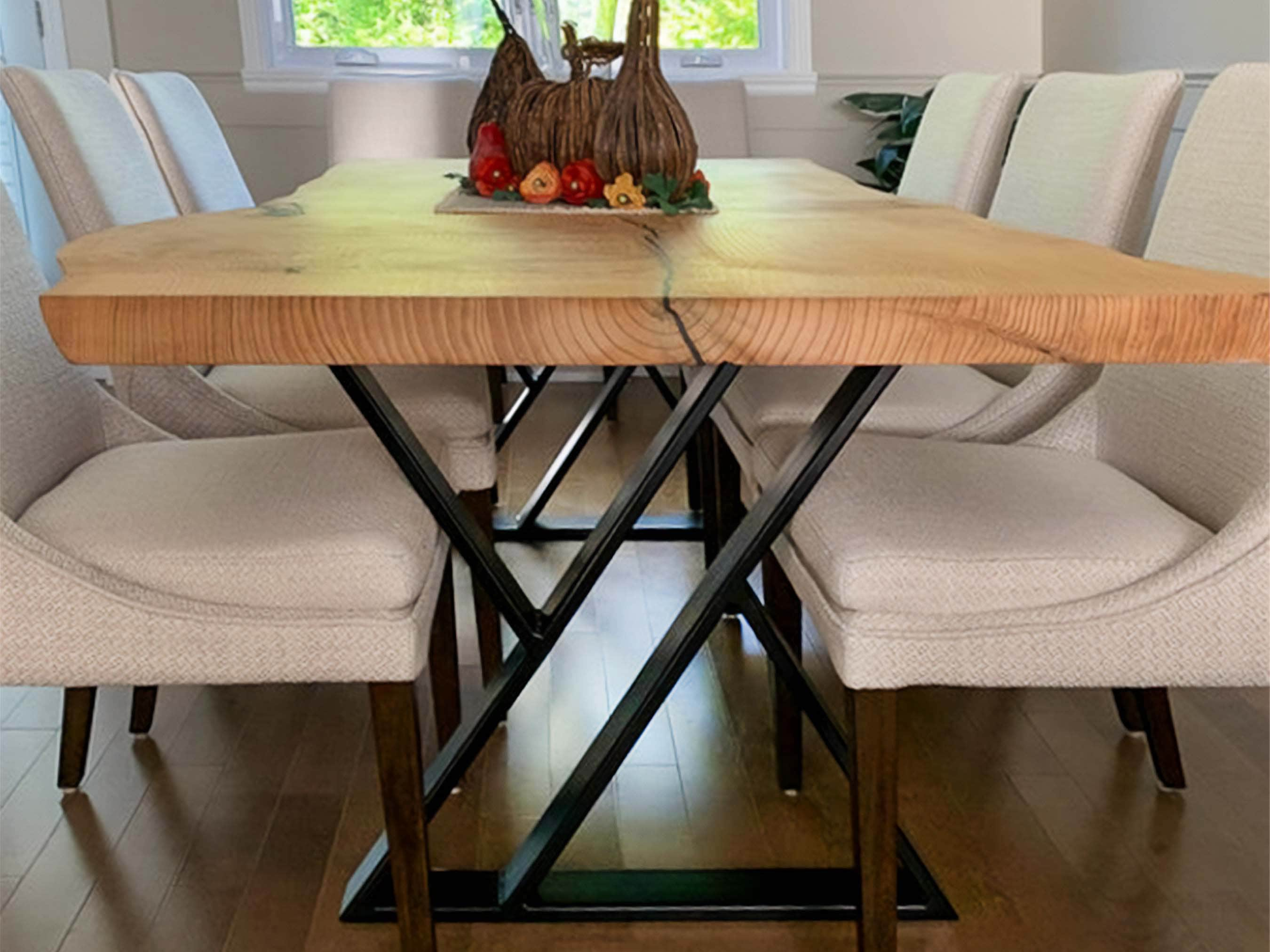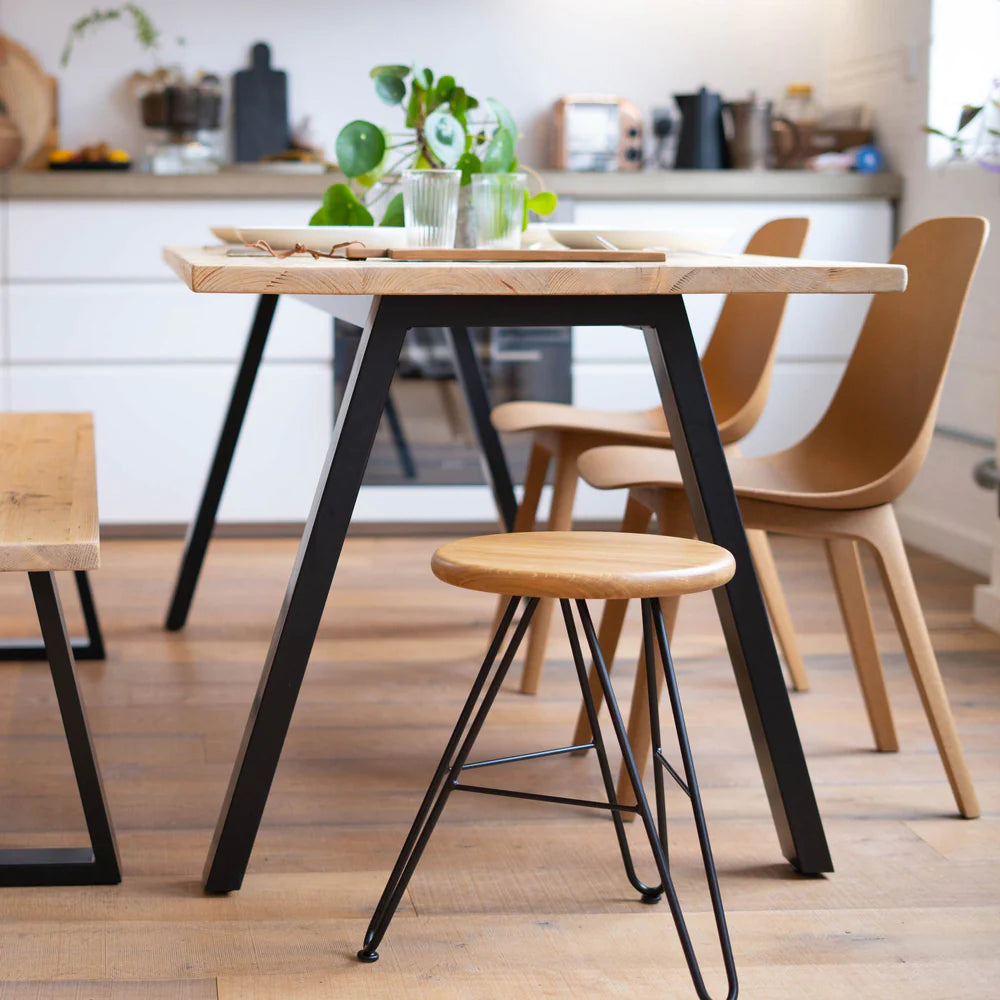How to Choose the Perfect Dining Room Table Legs for Your Home Design
How to Choose the Perfect Dining Room Table Legs for Your Home Design
Blog Article
A Thorough Check Out Eating Table Leg Styles: Discovering the Ideal Suit
Choosing the best dining table leg design is vital for both aesthetic appeal and sensible performance. Conventional four legs supply timeless style and stability, while the pedestal base gives boosted legroom and a modern appearance. For those with larger tables, trestle legs ensure strong support, whereas barrette legs introduce a mid-century modern ambiance with their minimalist style. The x-shaped legs blend modern style with boosted stability. Each of these alternatives brings distinct advantages, making the option greater than simply a matter of preference. Discover additionally to discover which style flawlessly matches your eating space and way of living.
Standard 4 Legs
Among the different types of dining table leg designs, the typical four-leg layout continues to be an ageless option for numerous homes. 4 legs offer balanced assistance, making certain the table continues to be steady and capable of bearing significant weight (dining room table legs).
From an aesthetic perspective, the traditional four-leg layout can be quickly adapted to various indoor styles. Whether crafted from wood, steel, or a mix of materials, these legs can be delicately sculpted, smooth and minimalistic, or anything in between. Their versatility permits them to match both rustic and contemporary setups effortlessly.
Furthermore, the straightforward framework of the four-leg design facilitates convenience of motion and positioning within a space. Unlike more complicated bases, this style decreases obstructions, giving adequate legroom for diners. In recap, the conventional four-leg table leg style weds withstanding style with functional functionality, making it a sharp choice for those looking for both form and function in their eating furniture.
Stand Base
Typically commemorated for its stylish and space-efficient layout, the pedestal base is a notable alternative to the typical four-leg configuration in table leg styles. This distinctive base generally includes a single central column sustaining the tabletop, which can vary in kind, from ornately sculpted timber to sleek, contemporary steel. One of the main benefits of the pedestal base is its capability to take full advantage of legroom and seating adaptability. Without corner legs, diners are managed greater freedom of motion, making it an ideal option for round and oblong tables that advertise even more intimate and inclusive events.
The central column itself supplies a canvas for complex designs and imaginative expressions, adding an element of visual interest underneath the table. In summary, the stand base combines capability with design, making it a refined and sensible choice for diverse eating environments.
Trestle Legs
Trestle legs give a robust and classic foundation for eating tables, defined by their horizontal cross-bracing and strong support light beams. Originating from middle ages times, this design has actually evolved yet preserved its vital structure, making it a perennial fave in both conventional and modern settings. The main trestle beam, commonly supported by two or even more vertical articles, supplies outstanding security, enabling for larger table sizes without the requirement for added legs.
A significant advantage of trestle leg tables is the enough legroom they provide. Unlike tables with 4 edge legs, the absence of obstructions at the table's sides gives unimpeded area for chairs and restaurants, enhancing comfort and availability. This makes trestle tables ideal for fitting bigger celebrations, whether in a dining room or a reception hall.
The visual versatility of trestle legs is noteworthy. Offered in a selection of products such as timber, metal, and composite, they can be finished to match a variety of indoor designs. From rustic farmhouse to sleek modern styles, trestle legs can be personalized to fit specific over here preferences. Their long-lasting allure and useful benefits make trestle legs a compelling choice for those seeking both style and practicality in their table.
Barrette Legs

The allure of hairpin legs hinges on their simpleness and versatility - dining room table legs. Offered in a series of materials, including steel and brass, they can be completed in countless colors to enhance various interior styles. Whether coupled with a rustic wood table top or a contemporary glass surface, barrette legs effortlessly mix capability with a touch of classic charm
Toughness is an additional notable function of hairpin go to website legs. In spite of their fragile look, these legs are crafted to birth substantial weight, guaranteeing the dining table stays steady and safe and secure. In addition, they are reasonably easy to install, making them a popular choice for DIY enthusiasts and professional furniture makers alike.
X-Shaped Legs

Constructed from products such as steel, timber, or a combination of both, X-shaped legs can be customized to match numerous design choices. Steel legs often provide a streamlined and industrial feel, suitable for loft-style homes and contemporary eating rooms. On the other hand, wooden X-shaped legs supply a warmer, a lot more rustic appeal, appropriate for farmhouse or diverse insides. The versatility in materials enables homeowners to customize their dining tables to much better fit their total layout scheme.
In addition, the design behind X-shaped legs makes certain also weight circulation, minimizing the risk of wobbling and enhancing sturdiness. This makes them especially appropriate for bigger eating tables that need extra support. Fundamentally, X-shaped legs blend useful engineering with modern visual appeals, making them a timeless option for diverse dining environments.
Conclusion
An extensive understanding of eating table leg designs reveals the distinctive attributes and benefits of each layout. Trestle legs guarantee robust assistance for larger tables, and barrette legs introduce a mid-century modern-day aesthetic.
Report this page